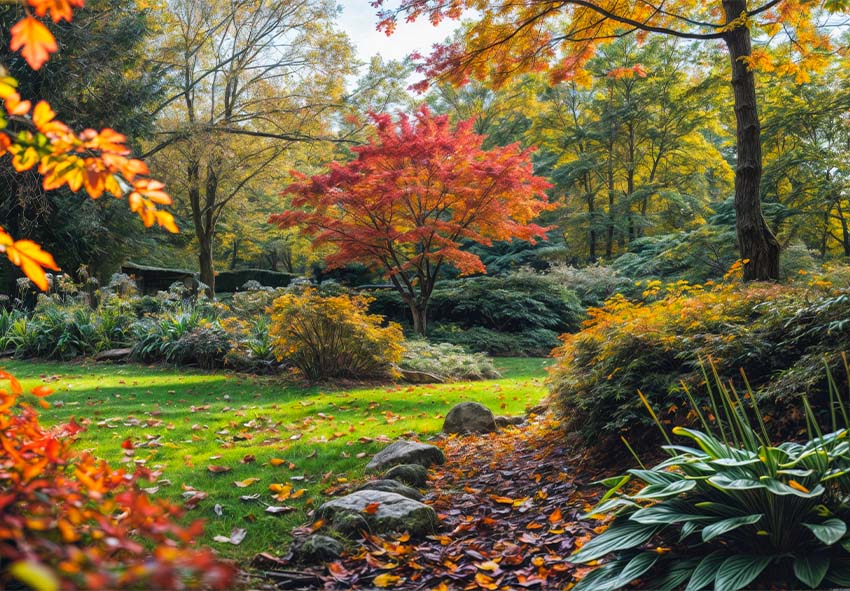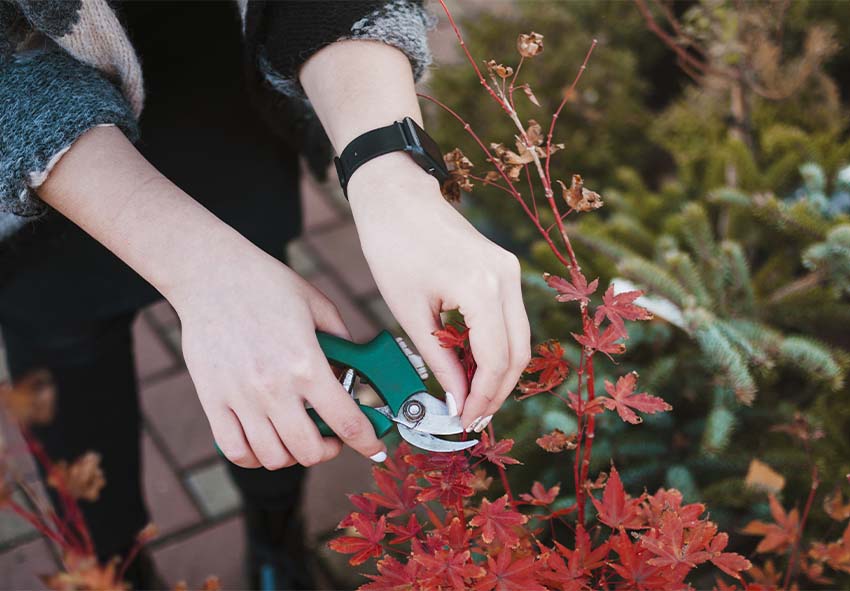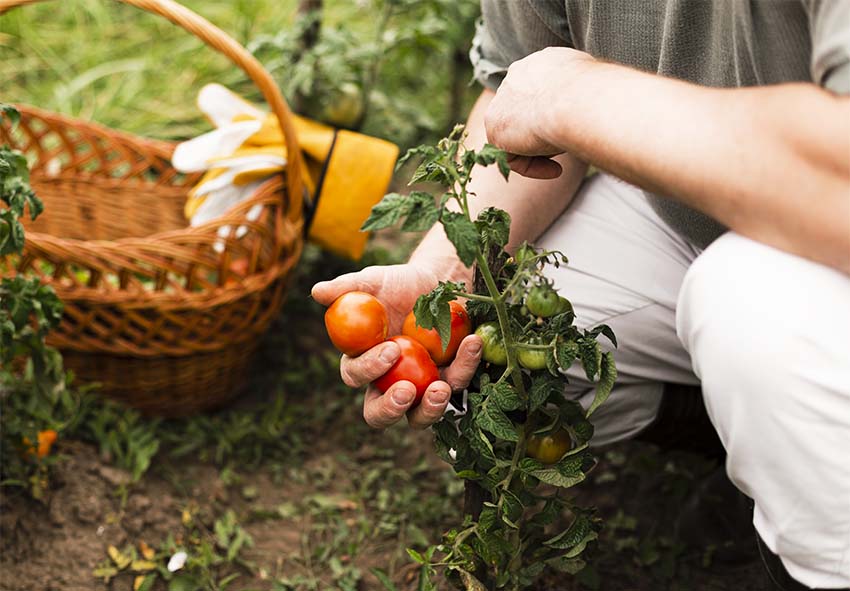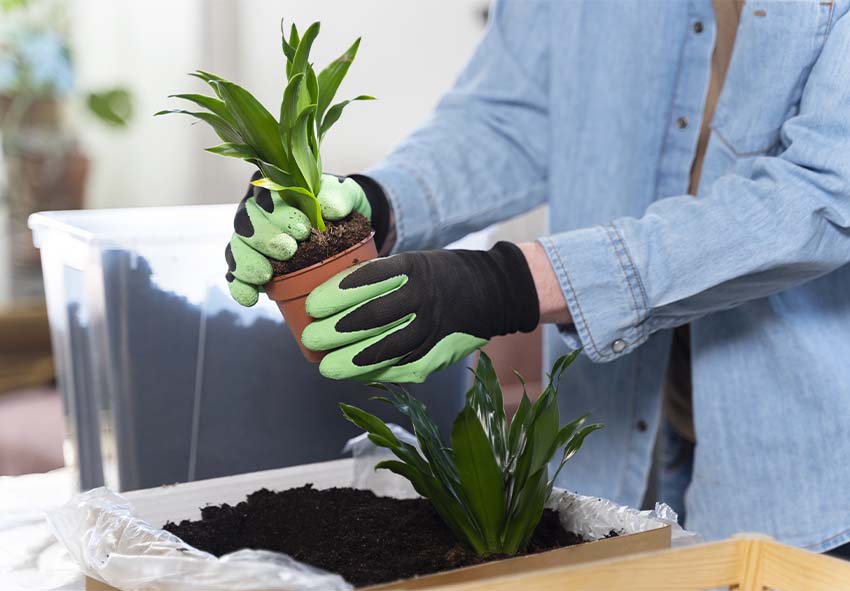Why Autumn Garden Cleanup Is Important
Autumn garden cleanup is a crucial step in maintaining a healthy and vibrant garden year after year. As the growing season comes to an end, this process helps prepare your plants and soil for the colder months ahead, ensuring they are well-protected and ready to thrive when spring returns. Our gardening blog is a perfect place to find all the information you need!

Preparing for Winter Dormancy
One of the key reasons for autumn cleanup is to prepare your garden for winter dormancy. By removing dead plants and debris, you reduce competition for nutrients and create a clean slate for your perennials to rest and conserve energy for the spring. Additionally, a thorough cleanup prevents the buildup of organic material that could negatively impact soil health and plant resilience over the winter.
Preventing Pests and Diseases
Autumn garden cleanup also plays a significant role in pest and disease prevention. Here are some tips for your garden:
- Remove Fallen Leaves and Debris: Clear away fallen leaves, dead plants, and other debris that can harbor pests and diseases.
- Dispose of Diseased Plant Material: Remove and properly dispose of any plant material that shows signs of disease to prevent it from spreading.
- Cut Back Perennials: Trim back perennials to reduce hiding spots for pests and minimize the spread of fungal diseases.
- Avoid Overwatering: Ensure that soil is well-drained and avoid overwatering to prevent creating an environment that attracts pests and fosters fungal growth.
- Use Mulch Wisely: Apply a fresh layer of mulch to suppress weeds and reduce moisture loss, but avoid piling it too close to plant stems, which can encourage rot.
Essential Tasks for Autumn Garden Cleanup
Proper garden maintenance during autumn involves a series of essential tasks that prepare your space for winter and set the stage for a successful spring. Each of these tasks helps to ensure that your garden remains healthy and ready to flourish when the growing season returns.
Removing Dead Plants and Debris
The first step in your autumn cleanup should be clearing out dead plants and debris. This not only improves the appearance of your garden but also reduces the likelihood of pests and diseases taking hold. Be sure to compost healthy plant material and dispose of any diseased plants in the trash to prevent the spread of pathogens.
Pruning and Trimming

Pruning is an important task to include in your fall cleanup routine, but it’s essential to know which plants to prune now and which to leave until spring. Pruning helps to shape plants, encourage healthy growth, and remove any dead or diseased branches that could cause problems over the winter. However, certain plants should be left unpruned until spring to avoid damaging new growth or removing flower buds.
Cleaning and Storing Garden Tools
After a season of hard work, your garden tools deserve some attention too:
- Remove Dirt and Debris: Thoroughly clean all tools by brushing off dirt and debris, and washing with water if necessary.
- Sharpen Blades: Sharpen the edges of pruners, shears, and other cutting tools to keep them in good working condition.
- Oil Moving Parts: Apply a light coat of oil to moving parts and metal surfaces to prevent rust and ensure smooth operation.
- Store in a Dry Place: Hang or store tools in a dry, sheltered area, such as a garage or shed, to protect them from moisture and rust.
- Inspect for Damage: Check tools for any damage or wear, and repair or replace them as needed before storing them for the winter.
Weeding the Garden Beds
Weeding is a task that should not be overlooked in the fall. Removing weeds before winter prevents them from taking hold and spreading in the spring, making your gardening tasks easier in the long run. Fall is also an ideal time to remove weeds that have gone to seed, as this can prevent a major weed problem next year.
Mulching and Soil Amendment
Applying mulch in the fall provides numerous benefits, including protecting plant roots from temperature fluctuations and conserving soil moisture. Mulching also helps to suppress weed growth and can improve the overall health of your soil as it breaks down over time. Additionally, amending the soil with compost or organic fertilizers in the fall ensures that nutrients are available for plants when they begin to grow again in the spring.
Special Considerations for Different Garden Types

Different garden types require unique approaches to autumn cleanup, ensuring that each area is well-prepared for the winter months. Tailoring your cleanup efforts to the specific needs of your garden can lead to better results and a more productive growing season next year:
- Vegetable Gardens
Vegetable gardens need thorough cleanup after harvest to prevent disease and prepare the soil for next year. Removing old plants and debris reduces the risk of pests and diseases overwintering in the garden. Additionally, preparing the soil now by adding compost or planting cover crops can help improve its fertility and structure for the next growing season.
- Flower Gardens
In flower gardens, focus on cutting back perennials and cleaning up fallen leaves. This helps to prevent the spread of diseases and ensures that your flower beds are neat and tidy for the winter. Pay special attention to delicate plants that may need extra protection, such as a layer of mulch or frost cloths, to survive the colder months.
- Lawns and Grassy Areas
Lawn care in autumn involves managing fallen leaves, which can smother grass if left unchecked. Raking up leaves regularly helps to prevent fungal diseases and maintain the health of your lawn. Additionally, aerating and fertilizing your lawn before winter ensures that it remains strong and healthy, with deep roots that can better withstand cold temperatures.
Caring for Garden Structures and Hardscaping
In addition to plant care, it’s important to tend to your garden’s structures and hardscaping elements before winter arrives. Proper maintenance of these features ensures that they remain in good condition and are ready to use when the weather warms up again.
Cleaning and Storing Outdoor Furniture

Outdoor furniture should be cleaned and protected from the elements to extend its lifespan. Dirt, debris, and moisture can cause damage if left unchecked, so thorough cleaning is essential. After cleaning, store your furniture, pots, and decorations in a dry, sheltered area to prevent damage from winter weather and to keep them in good condition for the next season.
Maintaining Pathways and Patios
Before winter sets in, take the time to clean and repair garden pathways and patios. This helps to prevent slips and falls, as well as protects the materials from freeze-thaw damage. Regular maintenance of your hardscaping elements ensures that they remain safe and attractive, reducing the need for costly repairs in the future.
Preparing Garden Beds for Winter
Properly preparing your garden beds for winter can make a significant difference in how well your plants survive and thrive in the next growing season. Taking the time to protect your plants and soil now will pay off with healthier, more vigorous growth in the spring.
Covering and Protecting Plants
Tender plants may require extra protection during the winter months. Using frost cloths or other coverings helps to shield them from extreme cold and frost, which can cause significant damage. Additionally, insulating garden beds with leaves, straw, or mulch can help protect plant roots from freezing temperatures, ensuring they survive the winter and emerge strong in the spring.
Winterizing Garden Containers

Garden containers and potted plants are more vulnerable to freezing temperatures than in-ground plants. To prevent damage, move containers to a sheltered location, insulate them with bubble wrap or fabric, or bury them in the ground for added protection. Proper winterization ensures that your potted plants survive the winter and are ready to thrive when spring returns.
Creating Windbreaks and Barriers
Wind can cause significant damage to plants during the winter, especially in exposed areas. Here are main advices for you:
- Identify Vulnerable Areas: Assess your garden to identify spots that are most exposed to strong winter winds.
- Install Natural Windbreaks: Plant dense shrubs or evergreen trees as natural windbreaks to protect plants from harsh winds.
- Build Temporary Barriers: Use burlap, snow fencing, or wooden panels to create temporary barriers around sensitive plants or garden beds.
- Use Existing Structures: Position garden furniture, trellises, or walls strategically to block wind and provide additional protection.
- Secure Loose Materials: Ensure that all barriers and windbreaks are firmly anchored to withstand strong winter gusts.
Conclusion
Autumn garden cleanup is an essential part of maintaining a healthy and vibrant garden year-round, so is preparing the garden for spring. By following these steps, you can ensure that your garden is well-prepared for the challenges of winter and ready to flourish come spring. Taking pride in your autumn garden cleanup efforts will not only protect your plants and garden structures but also set the stage for a thriving garden in the months ahead.
Frequently Asked Questions (FAQs) about Autumn Garden Cleanup
1. Why is autumn garden cleanup essential?
Autumn garden cleanup is crucial for maintaining plant health and preparing your garden for winter. By removing dead plants, debris, and weeds, you reduce the risk of pests and diseases overwintering. It also helps improve soil health, ensures better growth in spring, and protects garden structures and tools from winter damage.
2. What autumn perennials can I find in your online store?
In our online store Dutch-bulbs.com you can find a variety of autumn annuals and perennials perfect for adding late-season color to your garden. Popular choices include perennials like asters, sedum, and anemones thrive in the cooler autumn months. Each plant is carefully selected to ensure vibrant blooms and robust health, enhancing your garden as the season changes.
3. What should I do with fallen leaves in my garden?
Fallen leaves can be raked up and composted, providing valuable organic material for your garden. Alternatively, you can mulch them directly into garden beds to protect plant roots and improve soil quality. Avoid leaving thick layers of leaves on lawns, as this can smother grass and lead to fungal diseases.
4. Which plants should be pruned during autumn cleanup?
In autumn, prune perennials, shrubs, and any dead or diseased branches to prepare them for winter. However, avoid pruning spring-flowering plants, as this could remove buds that will bloom next year. It’s best to leave some plants, like ornamental grasses, unpruned until spring to provide winter interest and shelter for wildlife.
5. What are the benefits of mulching in the fall?
Mulching in the fall helps protect plant roots from temperature fluctuations, conserves soil moisture, and suppresses weeds. It also adds organic matter to the soil as it decomposes, improving soil structure and fertility. Apply a 2-3 inch layer of mulch around plants, but keep it away from the base of stems to prevent rot.
Published: 26.09.2024
